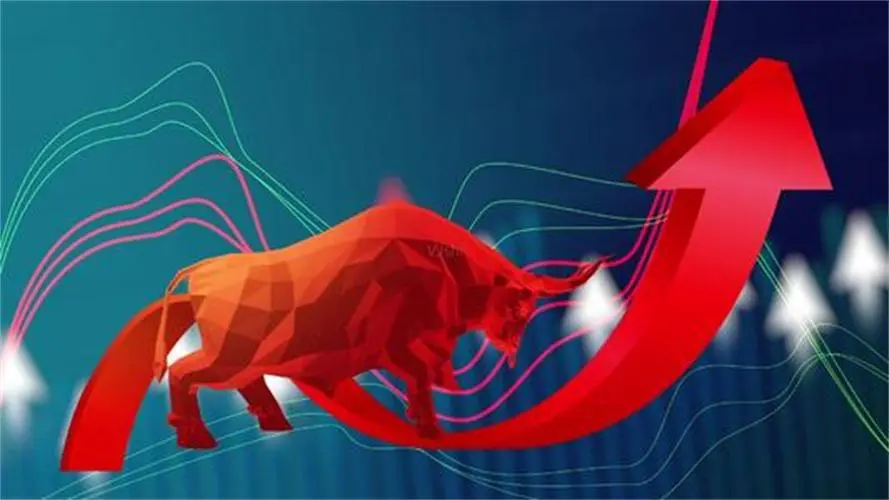Riding the Wave: Navigating the Current Stock Market Dynamics and Future Opportunities (Meta Description: Stock market analysis, investment strategies, growth stocks, policy catalysts, 2025 market outlook, new energy, pharmaceuticals)
Whoa, Nelly! The stock market's a rollercoaster, isn't it? One minute you're soaring high, the next you're plummeting down. But fear not, intrepid investor! This isn't just another market analysis regurgitating the same old tired numbers. This is a deep dive, a seasoned expert's perspective, offering insights gleaned from years spent navigating the treacherous currents of financial markets. We'll unpack the current market climate, dissecting the short-term trends and peering into the crystal ball (metaphorically speaking, of course!) to explore the promising opportunities waiting for us on the horizon in 2025 and beyond. We'll explore the impact of policy catalysts, both domestic and international, and how they shape the investment landscape. Forget the jargon-filled reports; this is a straightforward, human-centric guide to help you make informed decisions. We'll delve into the intricacies of small-cap growth stocks, the allure of the new energy sector, and the potential of pharmaceutical giants—all while keeping things simple and relatable. Think of this as your personal sherpa, guiding you through the mountainous terrain of the stock market, helping you identify peaks ripe for the picking and valleys to safely avoid. Ready to buckle up? Let's dive in!
Short-Term Market Trends: Still Some Heat Left
The current market is exhibiting what we've termed "lingering warmth." Overall volatility has cooled, but pockets of structural heat persist, indicating that the market is neither completely hot nor entirely cold. It's in a fascinating transitional phase. Trading activity remains significantly elevated, with small-cap growth stocks and thematic investments taking center stage. Simultaneously, institutional investors are expertly positioning themselves for the anticipated inflection points of 2025—a prime example being the photovoltaic (PV) industry, where supply-demand dynamics are expected to improve significantly from the latter half of next year.
Let's break down the current market dynamics a bit further:
-
ETF Activity Cooling: The rapid net buying spree within Exchange-Traded Funds (ETFs) seems to be winding down, reducing its marginal impact on the market. This suggests a potential shift in investor sentiment.
-
Leverage Still Rising (But Slowly): Margin debt continues to climb, indicating sustained investor enthusiasm. However, the rate of increase is slowing, hinting at a potential plateau.
-
Retail Investors Remain Active: Small investors are still actively engaged, as evidenced by ongoing redemptions from money market funds. This suggests a degree of risk appetite and a search for higher yields.
This combination of factors paints a picture of a market with a still-present, albeit waning, speculative fervour. Investors need to remain vigilant and adjust their strategies accordingly. The structural heat aligns with the characteristics of a market anticipating a significant shift in the coming year.
Two key observations stand out:
-
Short-Term Speculation Dominates: The high level of short-term trading activity supports the outperformance of small-cap growth stocks and thematic investments. After the initial surge in sectors like autonomous technology, low-altitude aviation, and the Huawei supply chain, there's been a shift towards smaller, more growth-oriented companies.
-
Institutional Investors Prepare for 2025: Major institutions are strategically positioning themselves for anticipated industry upturns in 2025. This is evident in the strong performance of sectors like electric vehicles and pharmaceuticals, where fundamental improvements are more readily apparent. The recent rally in the PV sector highlights the anticipation of supply-demand improvements projected for the second half of 2025.
This movement from near-term to long-term opportunities shows a shift in focus from immediate gains to more substantial, long-term growth. It's a crucial signal for investors to consider.
Policy Catalysts: A Double-Edged Sword
The anticipation of future policy catalysts is a crucial factor in maintaining the market's elevated temperature. Currently, the market primarily focuses on the existence of short-term policy catalysts, not necessarily their effectiveness. This, however, may be a rapidly closing window of opportunity.
A Crucial November: Early November presents a critical period for verification. Domestically, the National People's Congress Standing Committee will be scrutinizing fiscal expectations. Regardless of the short-term outcome, the period of evaluating policy effectiveness will commence. Internationally, the outcome of the US election will shape the subsequent policy landscape.
The current market consensus anticipates increased trade protectionism from the US, prompting retaliatory measures from other countries. While this directional assumption carries low risk, the timing and intensity remain uncertain. Inconsistent US policy could gradually erode the bullish sentiment that has rapidly consolidated in A-shares.
The effectiveness of future policy stimulus remains a significant question mark. Debt reduction is crucial for the successful implementation of future fiscal stimulus, while bank capital replenishment underpins future monetary stimulus. While the visibility of policy implementation in 2025 is high, the assumption is that the impact of these policies will be comparatively limited within 2024. Supply-side constraints in 2024 would hinder the effectiveness of demand-side policies. In 2025, with eased supply-side pressures, policies are projected to be more effective. Therefore, even with the delivery of fiscal stimulus, the resultant market enthusiasm will likely be constrained within the year.
New Energy and Pharmaceuticals: Growth Opportunities for 2025
Currently, small-cap growth stocks are maintaining high levels of interest, but their relative value proposition is already decreasing. For example, the proportion of strong-performing stocks in the ChiNext Board relative to the CSI 300 has rebounded to a relatively high level. This illustrates a concentration of investment in a smaller number of companies.
Here are three key market characteristics to consider:
-
Small-Cap Dominance: Stocks with high short-term price elasticity tend to favor smaller-cap companies. As the market's "lingering warmth" continues, the smaller companies are exhibiting greater profit-generating potential.
-
New Energy: A Different Story: The new energy sector hasn't shown the same "shrinking" effect. Within the new energy space, sectors with slower supply-side contraction (and thus lower valuations and prior price elasticity) are now becoming the source of strong short-term gains. This demonstrates the market is already seeking out long-term fundamental improvements.
-
Computer and Electronics Cooling Down: The computer and electronics sectors, while not experiencing the same "shrinking" effect, are seeing a slowdown in the momentum of major investment themes.
Overall, the market's development follows a predictable pattern, maintaining the existing level of activity while verifying upcoming catalysts. Therefore, investors should be prepared for upcoming verification and possible adjustments.
Our investment recommendations remain unchanged. We continue to focus on identifying structural opportunities based on medium-term cyclical inflection points in 2025, with a particular focus on:
-
New Energy: Focusing on battery chains, with opportunities expanding to other aspects of the new energy sector in 2025.
-
Pharmaceuticals: With stabilizing Q2 performance and potentially strong Q3 results due to low base effects, pharmaceuticals are another sector to look at.
-
Hong Kong Internet Stocks: These represent core assets where cyclical and policy inflection points have already been realized.
-
Science and Technology Innovation Board (STAR Market): This sector represents a key area for a turnaround in 2025. The ongoing surge in mergers and acquisitions is further strengthening the positive outlook for this sector.
Frequently Asked Questions (FAQ)
Q1: What is the biggest risk to this market outlook?
A1: The biggest risks are a worse-than-expected global economic downturn or slower than anticipated domestic economic recovery.
Q2: Should I invest in small-cap stocks now, given their recent performance?
A2: While small-cap stocks have seen strong gains, their relative valuation has decreased. Careful selection is crucial. Focus on companies with strong fundamental growth prospects.
Q3: How long will this "lingering warmth" in the market last?
A3: It's difficult to predict with certainty. The upcoming policy announcements in November will significantly influence the market's trajectory.
Q4: Is now a good time to invest in the new energy sector?
A4: The new energy sector offers long-term growth potential. However, the recent rally has increased valuations. Investors should carefully assess individual companies and their specific risks.
Q5: What about the pharmaceutical sector? Is it still a good investment?
A5: The pharmaceutical sector presents opportunities, particularly given the anticipated upturn in 2025. However, specific company performance should be carefully evaluated.
Q6: What's the outlook for Hong Kong internet stocks?
A6: Hong Kong internet stocks, having already experienced a significant recovery, offer relative stability and continued growth potential.
Conclusion: Stay Informed and Adapt
The current market presents both challenges and opportunities. While short-term speculation remains prevalent, a strategic focus on medium-term growth, particularly in sectors like new energy and pharmaceuticals, offers compelling prospects. Keeping abreast of policy developments, both domestically and internationally, is crucial for navigating the market's evolving dynamics. Remember, this isn't about timing the market perfectly—it's about making informed decisions based on a thorough understanding of the terrain, embracing flexibility, and adapting your strategy as needed. The journey to successful investment is a marathon, not a sprint. Stay vigilant, stay informed, and stay invested—wisely!



